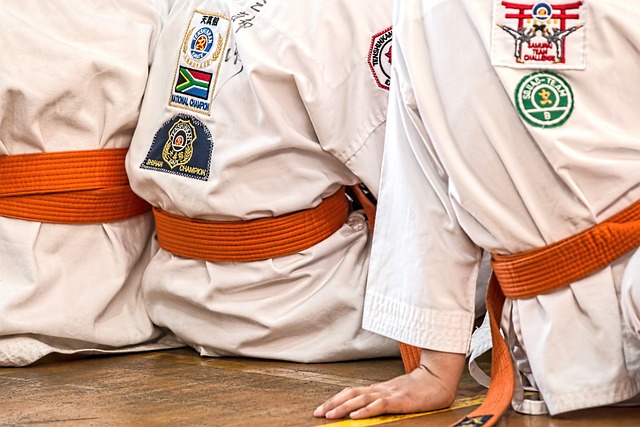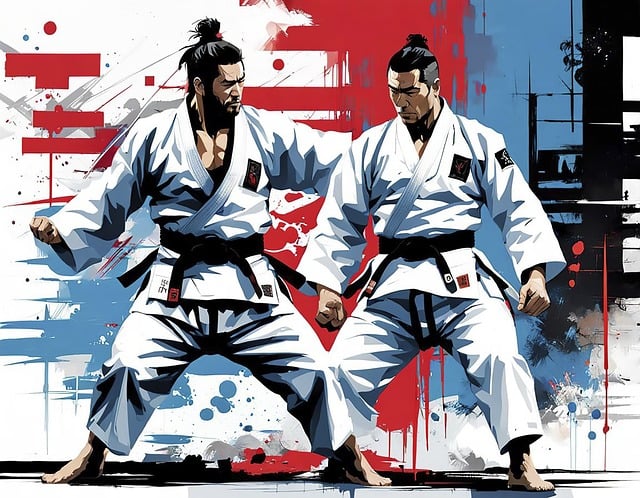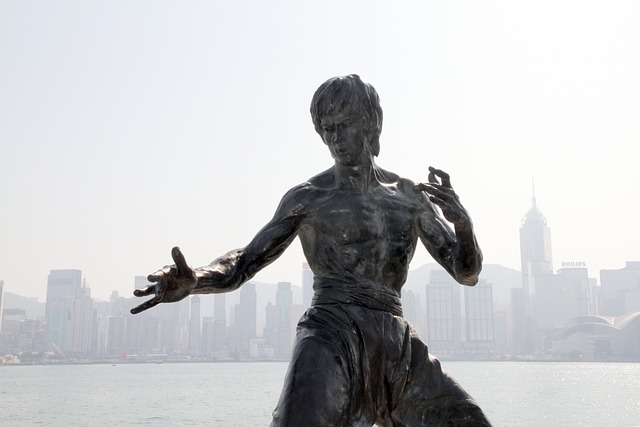Karate practitioners utilize specialized gear for effective and safe training, with the karate uniform, known as a 'Gi', being central to this equipment. The Gi, typically made from durable cotton or a blend, allows for full range of motion necessary for all Karate techniques while promoting equality among practitioners by being standardized. A high-quality Gi is essential for any karateka, symbolizing their commitment and providing comfort during intense training sessions. Protective equipment is also critical in karate, with mandatory gear in official tournaments ensuring safety and fairness as dictated by organizations like the World Karate Federation (WKF). This gear includes mouthguards, groin protectors, hand protectors, headgear, and optional forearm, chest, and shin pads, designed to offer protection while allowing practitioners to feel their strikes. Karate belts indicate a practitioner's skill level and dedication within the art, with each belt color signifying progression towards mastery. The belt system is a visual representation of a karateka's journey in the martial art, emphasizing both physical skill and philosophical understanding. Karate uniforms called 'Gi' serve as a consistent backdrop to this process, underlining the importance of each belt achieved in the discipline of Karate.
Karate, a discipline revered for its martial prowess and mental fortitude, relies on specialized equipment to ensure practitioners perform techniques safely and effectively. This article delves into the essential gear that forms the foundation of karate practice, from the traditional uniforms known as keikogi to the protective gear used in advanced training and competitions. We will also unravel the intricacies of karate belts, their significance, and the color-coded system that reflects a practitioner’s progression in rank, providing insight into the journey of a karateka. Whether you are new to the art or seeking to deepen your understanding, this exploration of karate equipment will offer a comprehensive view of what is required for both practice and competition.
- Essential Gear for Karate Practitioners: The Components of a Traditional Karate Uniform
- The Role and Variety of Protective Equipment in Karate Training and Competition
- Understanding Karate Belts: Their Significance, Colors, and Progression in Rank
Essential Gear for Karate Practitioners: The Components of a Traditional Karate Uniform

Karate practitioners, whether beginners or advanced martial artists, require a set of essential gear to perform techniques correctly and safely. Among this equipment, karate uniforms hold significant importance as they are not merely garments but embody the spirit of discipline and respect inherent in the practice of Karate. A traditional karate uniform, often referred to as a ‘Gi’, consists of a jacket and trousers, typically made from cotton or a cotton blend for optimal comfort and durability during training. The Gi serves several functions; it allows for ease of movement, enabling practitioners to execute various strikes, blocks, and kicks with unhindered range of motion. Additionally, the uniform is standardized in its design to maintain a sense of equality among practitioners, signifying that status or external adornments are secondary to the skill and discipline of the individual. The top half of the Gi, known as the ‘Uwagi’, is designed to be fitted while the trousers, called ‘Rokushaku Hakama’, are straight-legged and reach just above the ankles, allowing for flexibility without excess fabric that could catch or interfere with techniques. Choosing a quality Gi is essential for any karateka as it reflects their commitment to the art and ensures they can train in comfort and dignity. Whether practicing kata, sparring, or engaging in daily training, the karate uniform is a testament to the dedication of the practitioner and a vital component of traditional Karate practice.
The Role and Variety of Protective Equipment in Karate Training and Competition

In the realm of karate, protective equipment plays a pivotal role in both training and competition, ensuring the safety of practitioners while allowing them to hone their skills effectively. Karate uniforms, known as “keikogi,” are the foundational element of a practitioner’s attire, designed for flexibility and durability to accommodate various techniques without hindrance. These uniforms typically consist of a jacket and pants made of cotton or polyester blend, offering a comfortable fit while maintaining the freedom of movement necessary for executing karate moves with precision.
Beyond the keikogi, protective gear varies depending on the intensity and nature of the training or competition. For sparring, protective equipment includes mouthguards to shield the teeth and jaw, groin protectors for men, and hand protectors known as “motoblaci” or “karategi,” which are specifically designed for karate sparring. These gloves offer a balance between protection and sensitivity, allowing practitioners to feel their hands during contact while safeguarding against injury. Headgear is also common in competitive sparring to prevent cuts and abrasions. Protective pads for forearms, chest, and shins may be used in full-contact karate to further minimize the risk of injury. In tournaments, the specifications for protective equipment are outlined by the governing body, such as the World Karate Federation (WKF), ensuring that all participants adhere to consistent safety standards.
Understanding Karate Belts: Their Significance, Colors, and Progression in Rank

Karate belts serve as a tangible representation of a practitioner’s skill level and dedication to the martial art. Within the discipline of karate, practitioners wear uniforms known as ‘gi,’ which are white cotton garments that facilitate movement and provide a blank canvas for the colors of the belt system to stand out. The belts, starting from the lowest rank, are woven in various colors, each signifying a different level of mastery and understanding within the practice.
The progression from one belt to another is not merely a transition of hues but a journey through the ranks that requires discipline, perseverance, and a deepening commitment to the art. The white belt, often called ‘white kyu,’ signifies the beginning of this journey for novices. As students advance, they encounter different colored belts: yellow, green, blue, brown, and finally, black, which is known as ‘shodan’ or first-degree black belt. Each color carries its own meaning, symbolizing different stages of development in a karateka’s (practitioner’s) technique, knowledge, and skill. The higher the belt rank, the more proficient the practitioner becomes, reflecting their understanding of not only the physical aspects of karate but also the philosophical principles that underpin the discipline. The belt system is a visual testament to a martial artist’s progression and serves as an inspiration for continuous growth and respect within the karate community.
In conclusion, for those interested in the art of karate, whether for self-defense, fitness, or traditional practice, the equipment used is both purposeful and symbolic. Karate uniforms, known as keikogi, serve as a universal garb that signifies respect for the discipline and its origins. Protective gear, ranging from gum shields to body protectors, ensures safety during training and competition, allowing practitioners to hone their skills without undue risk. The progression of karate belts not only indicates a practitioner’s rank but also represents their journey through the discipline’s various levels of mastery. Understanding these components is essential for any karateka looking to engage in or further their practice. Whether starting out or advancing in skill, the right equipment is vital to a well-rounded and respectful approach to this ancient martial art.
